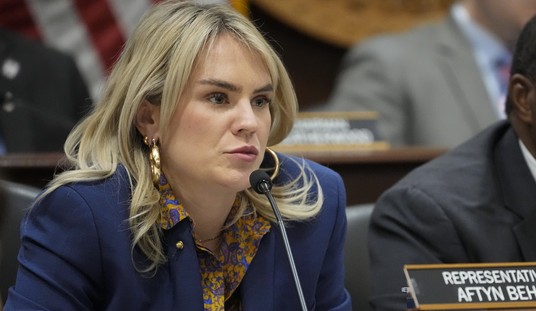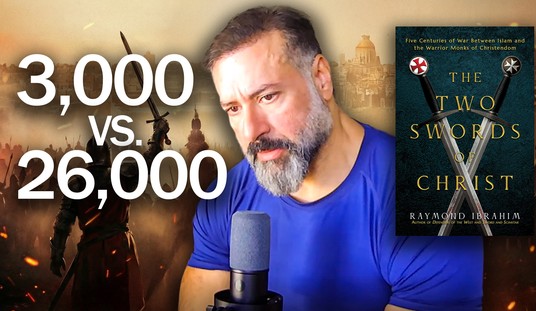In the first four parts of this essay I touched on some of the things that are wrong with the American educational system. (And I only scratched the surface, really — one could make a career out of documenting endemic flaws in our schools.) But focusing on the negative and complaining doesn’t solve problems. So let’s get constructive and figure a way out of this mess.
This final post in my five-part back-to-school essay is all about solutions: How can we fix education in America?
Below, I will outline my vision for a new paradigm in education. Realistically, I don’t expect all — or even any — of these proposals to be adopted anytime soon by the entrenched powers-that-be. But we’ve got to start somewhere, so let the edu-renaissance begin.
No single approach or solution will solve the multifaceted deficiencies in the way our children are currently being educated. So we must attack the problem on several conceptual levels simultaneously. Hence, it may not be necessary to implement every single one of the proposals outlined below, but if even just a few were adopted, it would be a significant step in the right direction.
Most of the proposals below are not original to me: Some are already gaining widespread support, while some are excellent new ideas just beginning to get traction. And a few are fresh concepts I came up with to help stimulate a rebirth of American education.
Readers of all political persuasions are encouraged to propose and discuss their own ideas — and to critique mine — in the comments section.
Educational structures
• Introduce competition into the educational marketplace.
This is a no-brainer. Parents across America are already clamoring for a voucher or tax-credit system whereby funding follows each individual student to any public, charter or private school of the parents’ choosing.
The more competition there is in the educational marketplace, the greater the pressure will be for schools to excel. The only way to attract students would be to create an outstanding school. If parents have options, they can take their kids out of bad schools and put them in better ones.
If free enterprise works for the economic system (demonstrated by explosive economic growth over the last 400 years), then why not for the educational system as well?
A national voucher or tax-credit system would allow thousands of exciting new charter schools and commercial/private schools to pop up in every community across America, leading to a revolution (the good kind of revolution) in school excellence.
Until the public school system is fixed, we should emphasize school choice — which would not only foster the creation of new schools, but also put great pressure on existing public schools to shape up, lest the competition steal away all their students.
Furthermore, the wider the variety of choice, the more satisfactorily each parent will be able to find a school to match their ideological, political, educational or religious preference. Everybody wins.
• Encourage homeschooling
Homeschooling to this day remains a rarity in America. It is generally perceived as mostly the domain of religious parents who want to save their kids from the horrors of secularism in the public schools. Because of this, homeschooling is stigmatized in mainstream culture as the province of extremists. But as more parents wake up to the pervasive radical politicization of many public schools, homeschooling to save kids from political indoctrination is likely to grow more commonplace, as it should.
The time has come to lift the stigma against homeschooling, which instead should be actively promoted as a way for parents of all stripes to customize their kids’ educations. Want your kid to focus intently on math and science with no political content whatsoever? Create the curriculum yourself. Want your kid to read all the great classics of literature? Get out the books and start teaching.
Homeschooling should be included in any voucher or tax-rebate scheme. It should be normalized as a standard option in education, and no longer be viewed as offbeat or bizarre.
Homeschooling teacher-parents should develop cooperative networks through which they can share resources. If one parent has personally developed an outstanding lesson plan for geometry or spelling or Cold War history, there should be a mechanism through which he or she could share that curriculum with like-minded fellow teacher-parents. If one parent has a special skill which his or her own child has already mastered, and another parent has a different skill, then kids can “trade parents” for several days and learn new skills. For example, if one parent is fluent in Mandarin and another parent is a computer whiz, they can trade places for a while, maximizing the educational horizons of both families.
Expanding on the concept further: Home-teachers with unique talents can begin to hold group classes in their homes for several homeschooled students at once. For example, in a local network of 30 homeschool families, one parent-teacher can teach pre-calculus to all students in the network, and then on a different day another parent-teacher can teach them all conversational Spanish. Think of it as an educational potluck.
This system would also remove one of the other main concerns the average American has about homeschooling, that kids will become isolated and not sufficiently socialized through interactions with other children.
Municipal homeschooling associations can band together and take all of the city’s homeschooled kids on field trips as a group, fostering the sense that the homeschooling community is itself a “virtual school,” increasing bonding and friendships among the otherwise isolated children.
Homeschooling should take its proper place as equal in stature to public schools, charter schools, or private schools.
• Break the monopoly of public education, but keep it as a safety net
Public schooling will always have its flaws, mainly because it necessarily must be geared to the lowest common denominator. Even so, we cannot get rid of it entirely, for three basic reasons:
– Most parents do not have the time, patience, expertise or interest to either homeschool or spend a lot of effort choosing amongst a panoply of confusing small-school options. Large public schools will likely continue to be the default fallback option for many students.
– Some parents prefer that their children attend large public schools to help with their socialization and to increase their life experience as early as possible, and to prevent the potential isolation that sometimes accompanies homeschooling or specialty-schooling.
– We don’t want to revert to the era before public schooling when education was restricted to the wealthy elite. Public schools should remain as a safety net to ensure that all American children get an education, however underprivileged or dysfunctional their home lives may be.
That said, we need to break the monopoly of publicly financed mass-education. Attendance at large public schools should not be compulsory, or even encouraged. Charter schools, private schools, small schools and homeschooling should be considered the preferred way to go, and students should only be sent to large public schools as an emergency fallback if no better options are available in that area or neighborhood, or if (as occasionally happens) the local public school is outstanding in its own right.
Curriculum
• Get back to basics
Political and religious bias in our school curriculum have spun completely out of control and contaminate every aspect of public education. Schools should jettison anything even resembling politicization and focus instead on nailing down basic skills, formerly known as “the three Rs”: Reading, writing and arithmetic. Too many students are cruising through school and even getting high school diplomas while remaining partly illiterate and lacking basic math skills. Enough! First teach every child how to read and write at an adult level, and have decent math/logic skills, and only after that is achieved should we even begin to worry about or argue over the issue of political bias in later grades.
• End the practice of mass-adoption of a few major textbooks
Textbooks are so 19th century. Printing is so 19th century. The textbook wars (detailed in the first four parts of this essay) can be avoided entirely by encouraging and fostering the district-by-district, school-by-school, or even class-by-class adoption of customized, individualized or small-scale instructional materials catering to local standards or teacher preferences. We don’t need to be arguing about the content of one-size-fits-all textbooks with print runs in the millions, because there shouldn’t even be one-size-fits-all textbooks. Screen-based instructional materials (i.e. for computers, Kindle/iPad/mobile-device platforms, etc.) can be distributed to students at a fraction of the cost of traditional paper-and-ink textbooks, and each school district or teacher can choose their favorites and not conform to stifling, dumbed-down, politicized or out-of-date textbooks.
• Form centrist national pressure groups to make textbooks indoctrination-free
Fantasies of customizable digitized instructional materials are nice to dream about but realistically are still several years from implementation. Until then, level-headed citizens should form pressure groups, think tanks, PACS, and/or lobbying groups to demand the removal of any whiff of indoctrination or political bias (left or right) from the curriculum. We need an uprising of angry citizens — the educational equivalent of the Tea Party — to strike fear into the hearts of those who push their agendas on our kids.
• Get politics and religion out of science classes
No more religious ideology masked as scientific skepticism. No more politics in the guise of truth. No more esteem-building piffle. Stop! Science classes should be pure science and nothing else. To get specific: Eliminate “intelligent design” in biology or anthropology classes; stop the politically-driven focus on anthropogenic global warming in high-school science; and no more multicultural tokenism in the history of science. Science education needs to be totally free of any indoctrination or politics, left/right/whatever.
• Introduce and popularize “skills survey” courses
Too much of our school curriculum is totally disconnected from the skill-sets needed to succeed in the real world. Even students who get good grades in history, art, social studies and science can graduate without a clue about how to get a job or what they even want to do with their lives.
Not every student is going to become an academic or have a liberal-arts-based career. To correct this glaring deficiency in our educational priorities, I propose that all public schools introduce a new type of required course in which students are briefly exposed to a wide variety of realistic careers and skills to help them decide what they may want to do upon graduating from high school or college. These skills-survey classes should always be not graded but instead be given on a simple pass/not-pass basis — students pass just for showing up and participating. No tests, no quizzes, no assessment — just observation.
The purpose of the class is exposure — to let students sample real-world careers, and get a taste of skills unknown to them. Even if a student doesn’t ever get a job in any of the fields covered by the course, he or she will learn how the world works. Each section can last anywhere from ten minutes, to an hour, or a week, or any level in between — just enough time to explain and demonstrate the basics. Examples of skills or careers covered by the course can include (but are not limited to):
• Retail skills, such as how to operate a cash register, order products, keep track of inventory;
• Carpentry and basic home repair;
• Basic contemporary computer skills, such as how to send an email, set up a blog or Web page, do simple programming, etc.
• Business and entrepreneurial fundamentals, such as how to identify an untapped market, found a small company, deal with government regulations, etc.
• How to effectively win an argument, or engage in an adult-level debate; a brief survey of logical fallacies;
• A visit to a hospital to learn the basics of nursing skills, and see what doctors do in real-world settings;
• Car repair; and the briefest explanation of how engines, carburetors, transmissions, etc. work;
• The basics of electrical circuitry, and what an electrician does;
• Plumbing, and how the plumbing system works;
• Gardening fundamentals, and how to grow your own food;
• Data entry (formerly known as “typing”);
• Any ideas or field trips which teachers can arrange, such as: visiting a local airport and sitting in the pilot’s seat of a small aircraft; going behind-the-scenes at a local television studio; going on a ride-along with the police or fire department; etc.
• …and so on; the options are limitless.
In each case, the exposure will necessarily be brief and very incomplete, but that’s OK; the goal is not to master every skill covered, but rather to be exposed to a wide variety of skills and careers that may spur interest for later pursuit.
Pedagogy (methods of instruction)
• Group students by ability, not age or ethnicity; bring back “tracking”
One of the problems I didn’t address earlier in this essay is the issue of “tracking,” or grouping students according to ability, rather than by age or other factors. Many districts in America still practice tracking, but many others (especially in “progressive” areas) decry tracking as elitist/racist/discriminatory. The issue often comes down to this: Schools in wealthier neighborhoods are often much better learning environments than schools in poor neighborhoods. This happens even in districts where the funding is legally required to be equal for each school; the better schools in wealthier neighborhoods spend their funds to improve learning, whereas schools in impoverished areas necessarily spend their money on discipline, security, repairs, etc., to the detriment of learning. Hence there will always be more poor parents seeking to send their kids to schools in better neighborhoods, than vice versa.
There’s no universally satisfactory solution to this dilemma. The “progressive” solution is to equally distribute the good students and the disruptive students into each school throughout the district, through bussing and/or a random lottery system. The problem with this approach is that a small number of disruptive students can destroy the learning environment of an entire class or school. It’s foolish to sprinkle each classroom with equal numbers of disruptive students and attentive students, because even one disruptive student in a classroom can spoil the learning atmosphere for the rest of the class. What’s the alternative? To group all the good students together so they can learn well together, and then in a separate school or class place all the disruptive or struggling students together, so they can receive special help and/or instruction customized to their needs. But you already know where this is headed: In those districts where there is racial disparity, and where that racial disparity reflects economic disparity, you may end up with what appears to be racially segregated schools or classes, even though the segregation was not based on race but rather was based entirely on disruptiveness and academic performance.
The time has come to shake off the ghosts of the past: Students at all levels would be better served if they were grouped according to ability, rather than by age or by ethnicity (to satisfy the shallow demands for “diversity” at all costs).
• Have “small schools” or “departments” within large high schools
A new trend in urban high schools is to divide each campus into departments, or “small schools” as they are sometimes called; in other words, to model high schools after universities, whereby students can choose a “major” or area of focus. I think this is a good idea.
This way, parents and students can select the political bias of their choice, rather then be subjected to school-wide indoctrination. It also allows for local standards to prevail without making them compulsory for every student. Thus, for example, a school in a left-leaning area such as Berkeley High School (which already has a “small school” system on its campus) allows students the option of signing up for the “School of Social Justice and Ecology” — which is generally advertised as being overtly leftist — while other students can choose less-political “small schools” or stay in the general population. At the same time, a high school school in a conservative area can have its own on-campus “department” with a decidedly right-leaning or patriotic bent, which students can voluntarily choose or avoid as they wish. This allows the political bias to be concentrated in self-selected enclaves within each school, and allows the general school environment to remain more politically neutral. Each school can have departments that reflect local politics and standards — just so long as they are voluntary and honestly advertised.
I wouldn’t even mind departments based on religious or cultural identities; a “small school” in Waco, Texas could teach Christian morals; a small school in Dearborn, Michigan could offer Islamic studies; a small school in Kiryas Joel, New York could focus on Judaica; all publicly funded. This way, the remaining non-Christian/non-Muslim/non-Jewish students won’t be forced to endure a school-wide religious culture which would make them feel excluded, whereas the religious students wouldn’t be compelled to learn in a thoroughly secularized environment. I view this as a potential win-win solution, but it remains to be seen if it could be implemented fairly and withstand legal challenges.
• Allow teachers with creative ideas to be idiosyncratic
It’s hard to not be inspired watching the brilliant and quirky teachers depicted in films like Stand and Deliver, Up the Down Staircase, and more recently Precious. But in the real world such teachers are few and far between. We should encourage creativity on the part of enthusiastic instructors by freeing them from the regimentation of national standards and a rigid curriculum. Forcing every teacher to be an identical drone teaching the identical mediocre lessons in the identical way is a recipe for failure. Idiosyncratic methods should be encouraged, not punished, and the way to do that is by decreasing reliance on stifling national standards.
Transparency and Independence
• Parental notification
Parents have a right to know what their kids are being taught. Too often we hear horror stories of politically biased teachers or administrators enforcing a “don’t tell your parents” rule in which students are discouraged from discussing controversial classroom lessons at home. This needs to end. “Parental notification” should become standard practice for every class, whereby at the start of each semester parents are given a full list of of all texts and assignments. The more parents know about what’s happening in school, the more they can participate in the process and demand sanity.
• Break the teachers’ unions
Teachers’ unions have become a major hindrance to decent education in this country. They prevent the firing of bad instructors, impose political orthodoxy on curricula, and in general resist any reforms which threaten their own power.
Furthermore, the teachers’ unions have been the driving force behind the Gramscian control of education (as discussed in Part IV of this essay), and are one of the reasons schools are politically biased in the first place.
I have no idea how to diminish the power of unions, so for now we’ll have to file this one under “wishful thinking.”
• Bring back competition and individuality
The de-emphasis on competition and push toward “group assignments” (discussed earlier) have numbed American schools. With no winners and no losers, and little reward for individually being the “best” in the class, students slog through a grey educational landscape with no motivation to excel.
Bring back competition. With a vengeance. Glorify individual achievement. This is what makes school exciting and helps push every student to try harder.
Got your own ideas? The world wants to know! The national conversation about education is hereby declared OPEN.
Part I: Ideological War Spells Doom for America’s Schoolkids
Part II: What’s the Matter with Texas?
Part III: Indoctrination Nation
Part IV: In Pursuit of Cultural Hegemony
Part V: Proposals for an Educational Renaissance









Join the conversation as a VIP Member